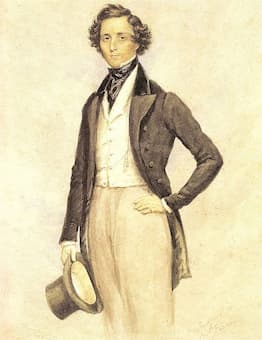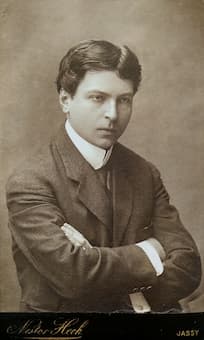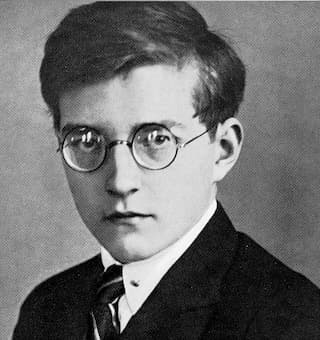
Eckart Kleßman: Felix Mendelssohn (1829)
The string quartet, made up of 2 violins, viola, and a cello, was one of the great developments of musical genre. With these three instrumental sounds, an entire world of music was created. One writer compared it to four intellectuals having a conversation, but that kind of writing seems to be rare. What it’s more like are 2 brilliant violin conversationalists, their intelligent viola friend, and the silent cello in the corner who comes out with some of the most interesting things.
When you double this to a String Octet, you seemingly more than double the power and the effect. The contrapuntal lines magnify. One of the curious things about the string octet is that many composers take it up early in their careers. Mendelssohn’s Octet, Op. 20, was written when he was just 16 and Shostakovich’s two string octets were written when he was 18, and George Enescu’s Octet, op. 7, when he was 19.
Felix Mendelssohn wrote his beloved string octet in 1825 and, in performance, Mendelssohn often took the second viola part. The work was written as birthday present for his teacher Eduard Reitz, who went on to found the Berlin Philharmonic Society in 1826.The first violin part is not easy, as befits a work for one’s teacher, and, overall, the work is a technical achievement in terms of both its instrumentation and how those instruments are called on to play. The work that followed this was his concert overture A Midsummer Night’s Dream and the third movement scherzo has many affinities with the work.
Felix Mendelssohn: String Octet in E-Flat Major, Op. 20 – III. Scherzo: Allegro leggierissimo (Kodály Quartet; Auer String Quartet)

George Enescu
George Enescu’s 1900 String Octet in C Major, Op. 7, was one of the first works where the composer felt he’d found his musical voice. Parallels have been heard between the evocative first movement and Schoenberg’s Verklärte Nacht, even though the Enescu work predates Schoenberg’s by 2 years. While in Vienna between 1888 and 1894, Enescu had studied counterpoint and fugue with Robert Fuchs, whose pupils included the leading young in Vienna at the time: Mahler, Strauss, Wolf, Korngold, Sibelius, Schreker and Zemlinsky. Just as Verklärte Nacht is Schoenberg’s last declaration of Romanticism teetering into Modernism, so Enescu’s Octet sits in that same precarious position.
George Enescu: String Octet in C Major, Op. 7 – I. Tres modéré – (Gringolts Quartet; Meta4)

Shostakovich in 1925
Dmitri Shostakovich’s 1925-26 string octets come as two one-movement pieces, one entitled Prelude and the other Scherzo. Works of Shostakovich’s student period, the two movements show the influences that surrounded him. The Prelude starts with a pseudo-Bach declamation along with a bit of Mussorgsky and Glière.
Dmitri Shostakovich: 2 Pieces for String Octet, Op. 11 – No. 1. Prelude: Adagio (Bambù Ensemble)
The following Scherzo shows us we are not in the land of Mendelssohn anymore, as one might assume from the movement title. Now the influences are closer to Prokofiev and Hindemith and the work is full of glittering and sharp dissonances. Polytonality comes to the fore and we have a string quartet that has been magnified almost by a kaleidoscope.
Dmitri Shostakovich: 2 Pieces for String Octet, Op. 11 – No. 2. Scherzo: Allegro molto (Bambù Ensemble)

Javier Martínez Campos
Composer and cellist Javier Martínez Campos’ 2016 Serenade for Strings takes the string octet in a truly new direction. A brilliant, shimmering work that transforms the string octet into something more akin to a string symphony yet manages to maintain the intimacy of the historical string octet. Martínez Campos was 27 when he wrote this work.
Going beyond the string quartet, the string octet gives composers the opportunity to expand their musical horizons while still maintaining control on a small ensemble. The availability of 4 violins gives the composer four different ways of creating a melody, with all the colours of the lower strings to assist in creating a musical image. So much more than the combinations of two string quartets, the string octet lets the composer into a new work of imagination and tonal colour.
Javier Martínez Campos: Serenata para Cuerdas (Bambù Ensemble)
For more of the best in classical music, sign up to our E-Newsletter



